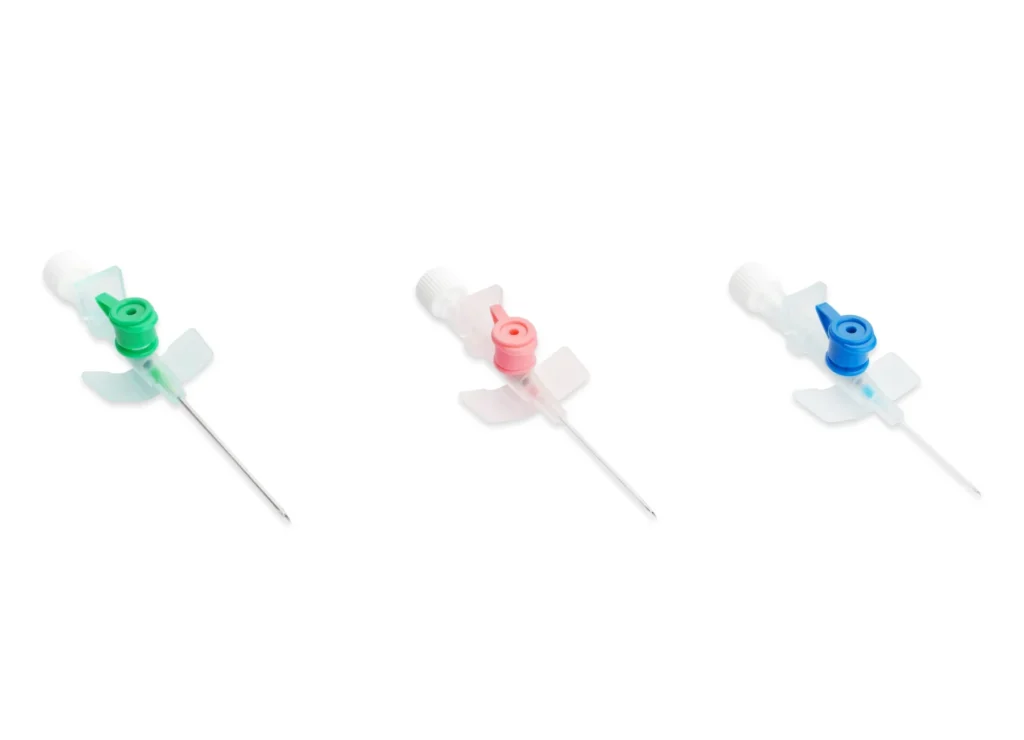TL;DR
- A cannula is a small tube inserted into a vein to provide safe and controlled access for fluids and medications.
- When used with an IV set, it helps in efficient and accurate treatment. This reduces pain and discomfort and supports recovery in hospitals and at home alike.
- A cannula can have a wide range of benefits if it is used and maintained properly, in line with medical and hygienic standards.
Intravenous therapy is an inseparable part of modern healthcare. A cannula provides safe access to the bloodstream for fluids, medications, and nutrition. Connecting to an IV set provides a controlled pathway that reduces the need for repeated needle sticks and ensures accurate treatment delivery.
This post talks about the types of cannulas, their applications and advantages, and essential care practices. Understanding these aspects is vital for healthcare professionals and caretakers to make sure that the patient is getting the correct and beneficial treatment.
What Is a Cannula?
A cannula is a thin, flexible tube designed to be inserted into a vein to provide access for medical treatment. It is commonly used in hospitals, clinics, and at home to deliver important fluids such as glucose and blood.
The main components of a cannula include:
- Needle/Introducer: This is used to puncture the vein and guide the cannula into place.
- Flexible tube: This remains inside the vein after insertion and continues providing access.
- Hub: It connects the cannula to medical devices or extension lines of treatment.
Cannulas come in different sizes and gauges to suit different patients, like children or individuals with fragile veins.
Types of Cannulas
Cannulas are available in different types, each designed for specific medical applications. Selecting the right one depends on the treatment purpose, patient condition, and the duration of use.
-
- Peripheral Cannula: One of the most commonly used types, a peripheral cannula is inserted into a small vein, usually in the hand or arm. It is ideal for short-term treatments such as fluid therapy or medication administration.
- Central Venous Cannula: A central venous cannula is placed in a large vein, like the one in the chest or neck, for patients who require long-term treatment or high-volume fluid delivery. It allows direct access to the central bloodstream, ensuring faster therapeutic effects.
- Arterial Cannula: Used mainly in critical care and surgical procedures, the arterial cannula helps monitor blood pressure continuously and collect blood samples for testing. It is inserted into an artery rather than a vein.
- Nasal Cannula: The nasal cannula is designed for oxygen delivery. It consists of two small prongs inserted into the nostrils, providing a steady flow of oxygen to patients with respiratory issues.
Each type of cannula serves a unique purpose in medical care. Using the correct type not only ensures treatment efficiency but also enhances patient comfort and safety.
Benefits of Using a Cannula
The use of cannulas has transformed medical treatment by providing a safe and reliable access to the human bloodstream. Their design and functionality make them a necessity in both emergency and long-term care.
- Reduced discomfort for patients: Cannulas get rid of the need for multiple needle insertions by offering prolonged access. This reduces pain, especially for those patients who require frequent treatment.
- Safe and hygienic: Modern cannulas are made from medical-grade materials that reduce the risk of infections and allergic reactions. Their sterile designs ensure clean and hygienic treatment.
- Controlled flow and accuracy: By providing direct access to the bloodstream, cannulas allow healthcare professionals or caretakers to control the amount and rate of fluid transferred to the body.
- Flexibility in medical use: A cannula can be used across various settings – big hospitals, local clinics, and also at home. They also cater to a range of needs, including hydration and transfusion.
- Support for emergency and long-term care: They help a lot in emergency and chronic disease management. Their quick insertion and secure placement act as life-savers in critical conditions.
Final Takeaway
Cannulas have become an important part of modern medical care, providing a safe and minimally invasive way to administer treatment. Their flexibility and design, which provide controlled access, make them vital for both short-term and long-term use.
To ensure maximum safety and extend the usability, proper cannula maintenance is crucial. This includes regular inspections of the insertion area for any signs of infection, replacing the cannula periodically, using sterile techniques during handling or dressing changes, and avoiding unnecessary pressure on the site of insertion.
The right handling, hygiene, and monitoring are the solution to preventing complications and bringing out the best outcomes for patients.
Frequently Asked Questions (FAQs)
- How long can a cannula stay inserted before it needs to be replaced?
The duration depends on the type of cannula and the patient’s condition. Peripheral cannulas are usually replaced every 48-72 hours to prevent infection, while central or arterial cannulas can remain longer under strict monitoring and aseptic care. - What complications can occur if a cannula is not maintained properly?
Improper maintenance can lead to issues like vein inflammation (phlebitis), local infections, or blockage of the tube. Regular inspection, cleaning, and timely replacement are essential to avoid such complications. - Are there specific materials used in cannulas for patients with sensitive skin or allergies?
Yes. Many modern cannulas are made from biocompatible polyurethane or silicone, which are gentle on the skin and minimise allergic reactions. These materials are preferred for patients with known sensitivities or long-term treatment requirements.



